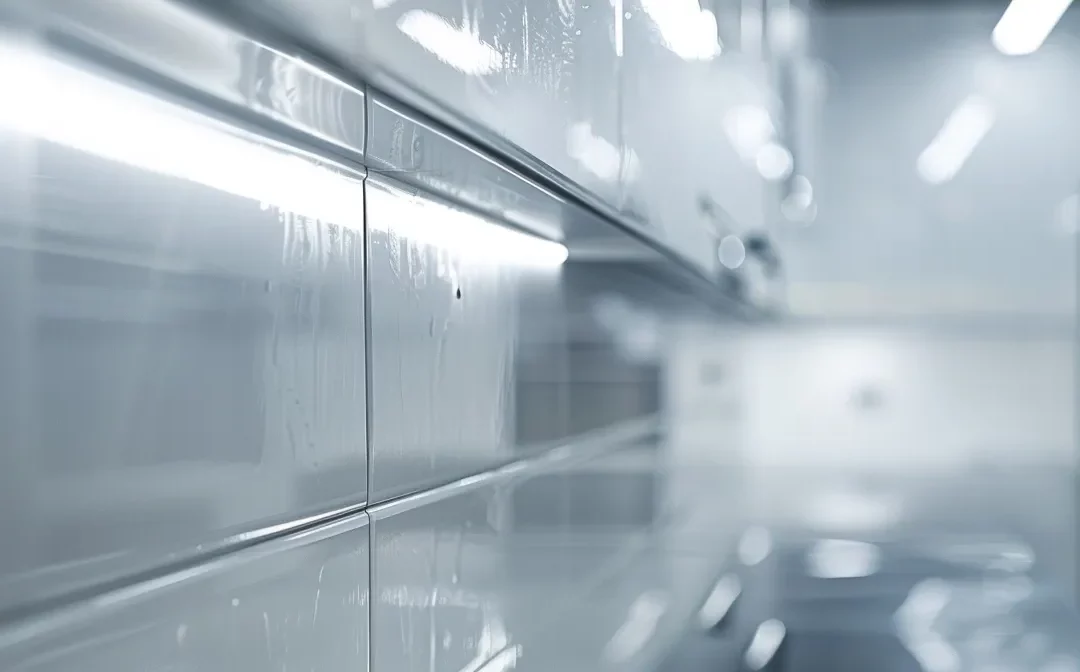Kitchen Cabinet Resurfacing Melbourne
Selecting the right materials for kitchen cabinet resurfacing can be challenging, especially with varied options affecting durability and appearance. Did you know that humidity and density play crucial roles in how long your cabinets last? In this ultimate guide, I will help you explore material choices, including solid wood, laminate, and eco-friendly options, while addressing common concerns such as odor and construction quality. By the end, you’ll have the knowledge to make informed decisions, ensuring your kitchen makeover meets both aesthetic and practical needs.
Key Takeaways
- Assess your cabinet condition to choose appropriate resurfacing materials effectively
- Defining your kitchen style ensures a harmonious finish that reflects personal taste
- Balance durability and maintenance when selecting materials for long-lasting cabinet performance
- Choosing solid wood or hardwood veneers enhances both the aesthetic and durability of cabinets
- Opt for eco-friendly materials and low-VOC finishes to support sustainability in your kitchen
Understanding the Importance of Material Selection in Cabinet Resurfacing
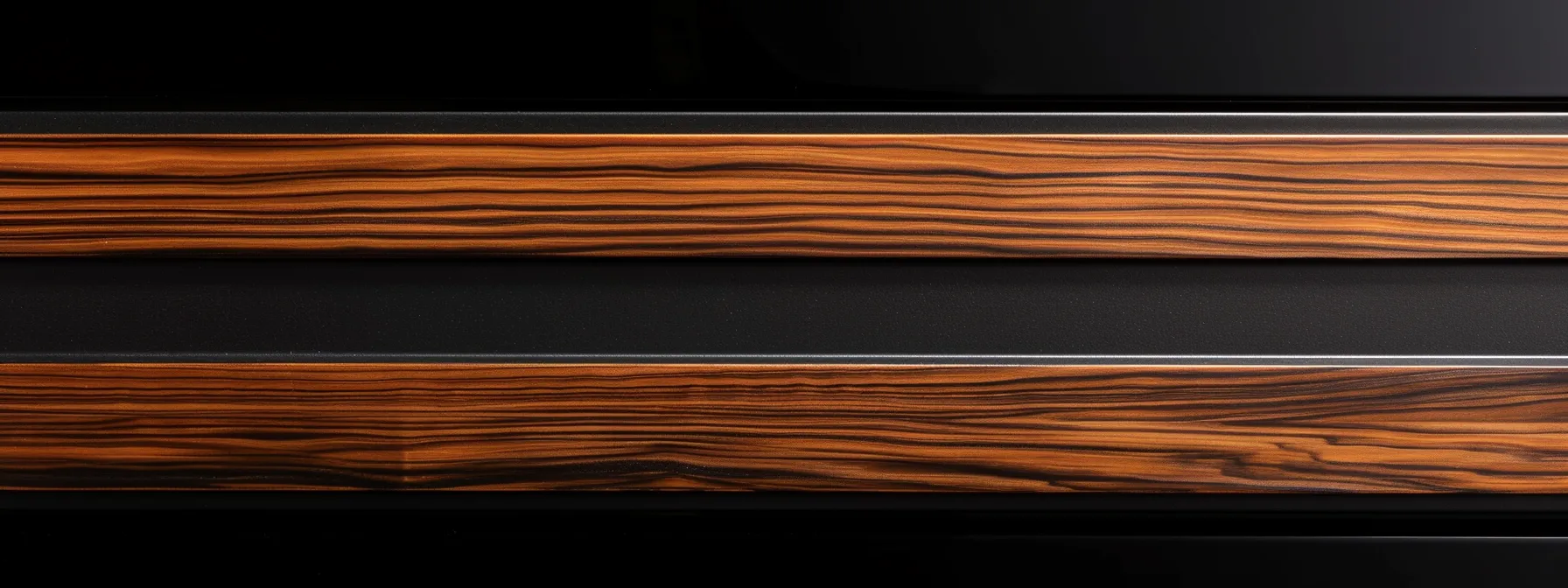
Assessing your current cabinet condition is crucial, as it helps determine the right resurfacing materials. Next, defining your kitchen style and aesthetics allows us to choose a finish that complements your home. Lastly, we must balance durability and maintenance needs to ensure your cabinets withstand wear while showcasing exquisite grain and craftsmanship, whether using maple or other materials.
Assessing Your Current Cabinet Condition
When I assess the current condition of your cabinets, I look for signs of wear and tear, such as scratches, dents, or any damage caused by dust and oil buildup. Importantly, I check for signs of termite infestation, as this can compromise the integrity of the cabinets and necessitate more extensive repairs. Additionally, evaluating the hardware, like drawer pulls and metal fittings, helps determine what needs replacing and what can be preserved, ensuring a seamless resurfacing process that aligns with your kitchen’s style.
Defining Your Kitchen Style and Aesthetics
Defining your kitchen style and aesthetics is essential when selecting materials for cabinet resurfacing. I encourage you to think about how elements like hardwood and thermofoil can enhance the overall look of your kitchen while ensuring durability. For instance, while granite countertops might offer a striking visual appeal, pairing them with the right resurfaced cabinets—whether using hardboard for a modern touch or opting for classic hardwood—can create a cohesive and inviting environment that reflects your personal taste.
Balancing Durability and Maintenance Needs
When selecting materials for your kitchen cabinet resurfacing, balancing durability and maintenance needs is vital for long-lasting performance. For instance, using plywood can provide strength and stability, while a quality stain and primer will protect the wood from wear, ensuring it retains its appearance over time. Incorporating steel hardware not only enhances the visual appeal but also offers resilience against the rigors of daily kitchen use, minimizing the need for frequent repairs or replacements.
Choosing the right materials can change everything in cabinet resurfacing. Let’s now turn to solid wood options, where quality meets beauty.
Exploring Solid Wood Options for Cabinet Resurfacing
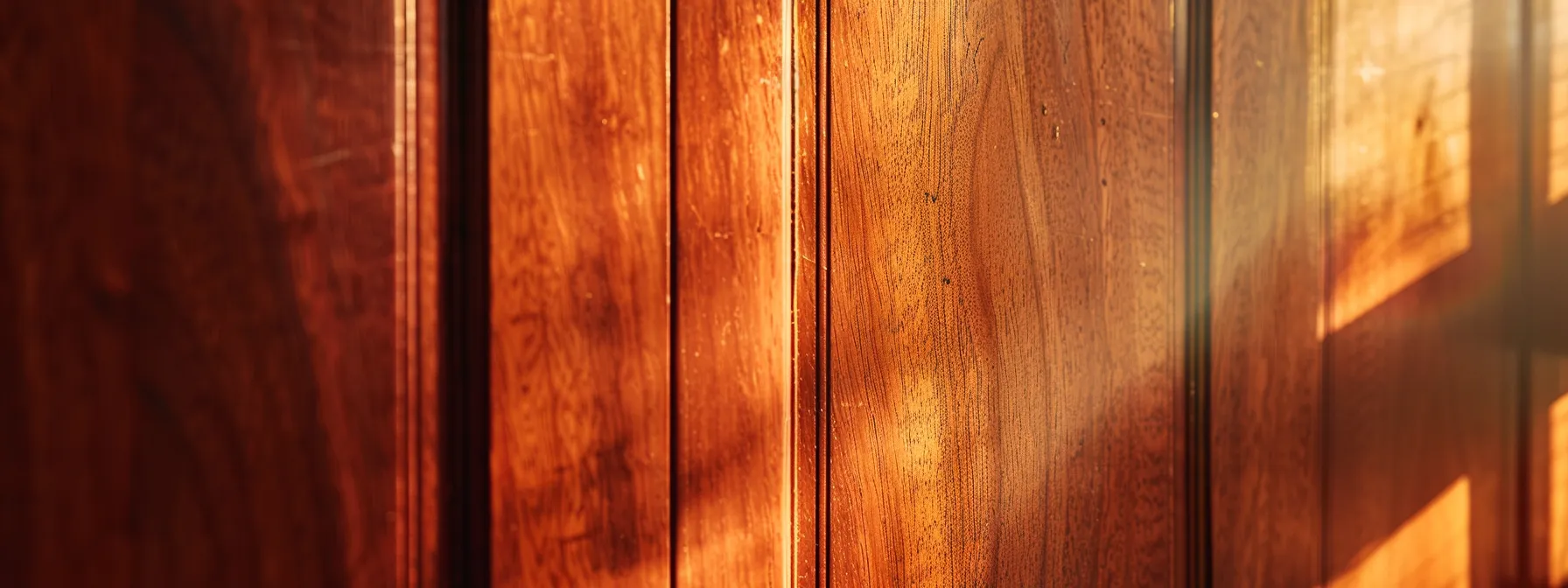
Choosing solid wood for your kitchen cabinet resurfacing offers several advantages, including durability and aesthetic appeal. I will cover the benefits of using hardwood veneers, popular wood species and their characteristics, and tips for selecting the right wood finish. Understanding these elements is crucial, as they influence both the look and longevity of your cabinets, enhancing their compatibility with your countertops and providing a sturdy substrate for your remodeling efforts.
Benefits of Using Hardwood Veneers
Choosing hardwood veneers for your cabinet resurfacing can offer significant advantages, particularly in combating wear and tear over time. As a professional working with various materials, I appreciate how hardwood veneers provide the rich appearance of solid wood while being lighter and more economical than solid wood options. Additionally, when working with particle board or foam substrates, using hardwood veneers ensures that the cabinets maintain structural integrity without the drawbacks of less durable materials, making them an ideal choice for those looking to enhance the aesthetic value of their kitchen with lasting quality. Collaborating with a reliable cabinet refacing company can further ensure that the installation is done correctly, using appropriate screws and techniques to maximize longevity and performance.
Popular Wood Species and Their Characteristics
When selecting wood species for your kitchen cabinet resurfacing, I often consider popular options such as oak, maple, and cherry. Oak is known for its exceptional durability and pronounced grain, making it a great fit for rustic or contemporary styles; maple offers a smooth finish and is ideal for modern designs due to its fine grain and ability to take varnish beautifully; meanwhile, cherry brings warmth and richness, developing a rich patina over time that enhances its aesthetic value. Each of these woods can be paired with decorative laminate for varied appearances, ensuring your pantry and Kitchen Renovations reflect your personal style and meet practical needs.
Tips for Choosing the Right Wood Finish
When it comes to choosing the right wood finish for your kitchen cabinet resurfacing, I recommend considering the environment the cabinets will be in, particularly if they are near walls that may experience water damage. A finish that offers moisture resistance, such as a high-quality polyurethane, can help protect the wood and keep its appearance vibrant. If you’re working with materials like melamine resin, utilizing sandpaper to create a smooth base before applying the finish can enhance adhesion and longevity, ensuring that your cabinets blend seamlessly with features like quartz countertops.
Solid wood offers beauty and strength, but laminate materials bring a different kind of appeal. Let’s look at how these modern options can enhance your cabinets and your space.
The Advantages of Laminate Materials for Cabinets
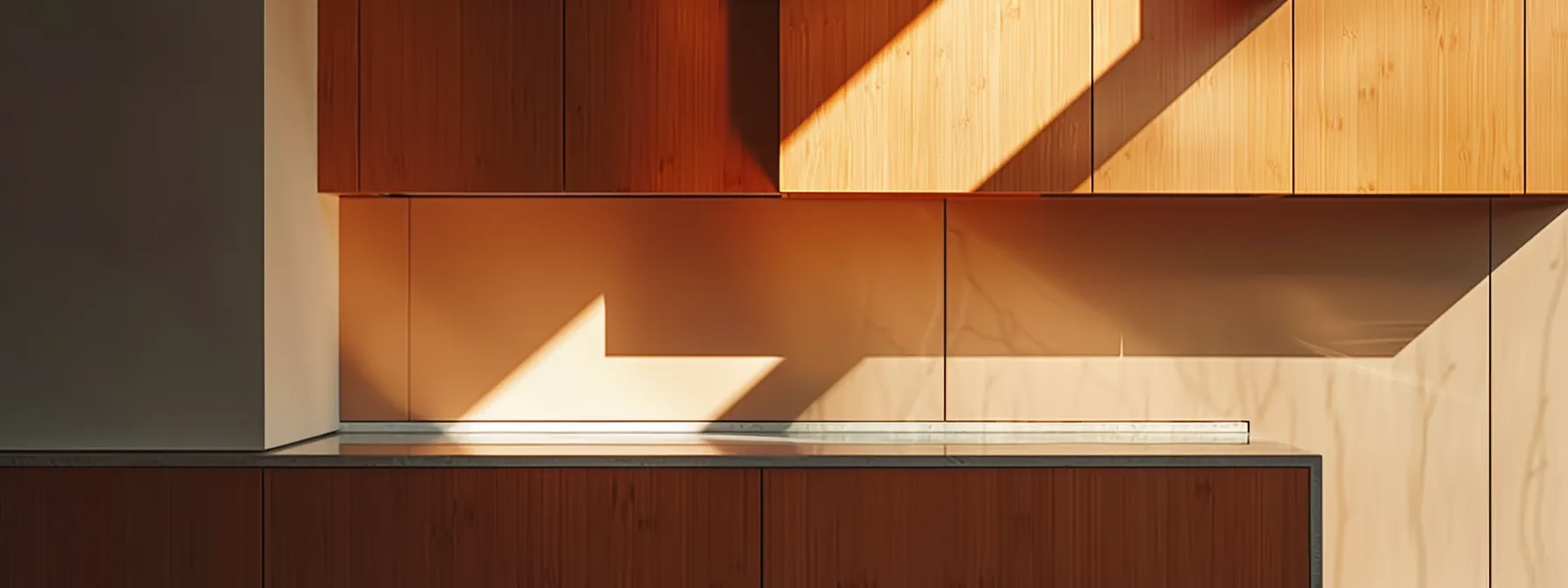
When considering laminate materials for kitchen cabinet resurfacing, I focus on high-pressure vs. low-pressure laminate, as each offers distinct benefits for home improvement projects. Understanding their durability and ease of maintenance is key, along with the flexibility to customize colors and patterns, including options like melamine and wood veneer. This section will provide valuable insights on how these choices can enhance your kitchen’s aesthetic and functionality.
High-Pressure vs. Low-Pressure Laminate
When choosing between high-pressure and low-pressure laminate for cabinet resurfacing, I focus on durability and application techniques. High-pressure laminate is applied with a robust adhesive and features a sturdy surface that can withstand everyday wear, making it ideal in high-use areas like kitchens. In contrast, low-pressure laminate is lighter and more flexible, which can be beneficial for some applications, but may not provide the same level of durability as its high-pressure counterpart, especially when paired with stainless steel accents or when incorporating a wood finish that requires more robust protection.
Durability and Ease of Maintenance
When I consider the durability and ease of maintenance of laminate materials for kitchen cabinet resurfacing, I find they excel in practical applications. High-pressure laminates, in particular, are moisture-resistant, making them ideal for kitchens where spills and humidity are common. This durability often comes with a warranty, ensuring your investment lasts while complementing your taste, whether you prefer a classic oak finish or a modern color palette.
Customizing Colors and Patterns With Laminate
Customizing colors and patterns with laminate allows for a unique design that can complement any kitchen aesthetic, whether you’re looking for a bold statement or a subtle touch. With versatile options in polyvinyl chloride (PVC) laminates, I can help you choose designs that mimic the look of solid wood without the associated costs, providing a stylish yet practical solution. As a professional in woodworking, I recommend using a quality paintbrush or roller to apply finishes over laminate surfaces, ensuring an exceptional look that maintains durability over time, truly transforming your cabinetry into a focal point of your kitchen.
Laminate materials bring durability and style, but there’s more to explore. Next, we’ll look at Thermofoil and Rigid Thermofoil options that can elevate your cabinetry even further.
Utilizing Thermofoil and Rigid Thermofoil (RTF) Options
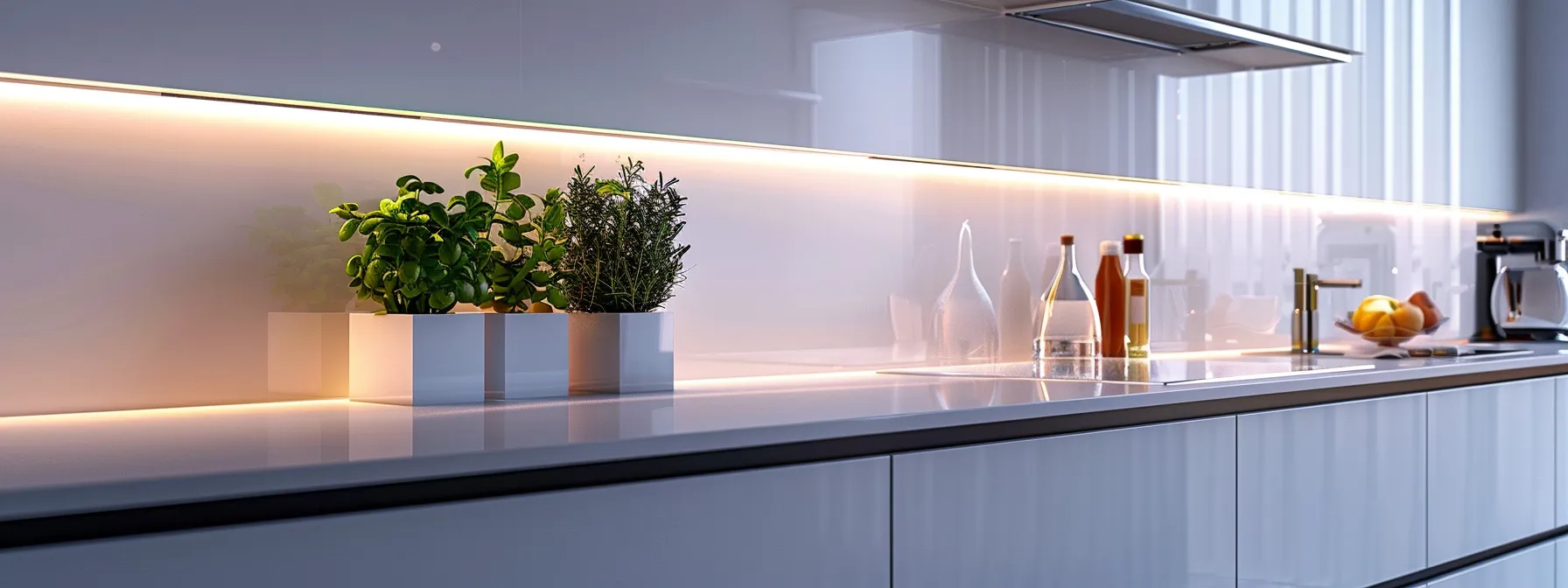
In my experience, understanding Thermofoil application is crucial when selecting materials for kitchen cabinet resurfacing. I’ll discuss the pros and cons of using Rigid Thermofoil (RTF) materials, highlighting their resin and plastic properties. Additionally, I will compare Thermofoil to other resurfacing materials, including their solvent resistance and finish options like satin, helping you make an informed decision for your kitchen upgrade.
Understanding Thermofoil Application
Understanding Thermofoil application is essential for achieving a modern look in your cabinetry. This material is known for its versatility and ability to mimic sleek finishes, even those resembling concrete, which can enhance contemporary interior design. When applying acrylic paint to Thermofoil surfaces, it’s vital to ensure proper preparation of the drawers and cabinet fronts to achieve a lasting bond and a polished appearance that meets your aesthetic desires.
Pros and Cons of Using RTF Materials
Using Rigid Thermofoil (RTF) materials for kitchen cabinet resurfacing presents both advantages and disadvantages. On one hand, RTF is lightweight and compatible with fiberboard and engineered wood, making installation relatively straightforward and cost-effective. It is also moisture-resistant, which is vital for kitchens, but it may lack the same durability as solid wood options, potentially leading to issues if subjected to high heat or impacts. Therefore, understanding these factors is essential for making the best choice for your kitchen renovation needs:
- Lightweight and easy to install
- Compatible with fiberboard and engineered wood
- Moisture-resistant, ideal for kitchens
- Less durable compared to solid wood options
Comparing Thermofoil to Other Resurfacing Materials
When comparing Thermofoil to other resurfacing materials, I find it important to highlight the distinct properties and application processes. Unlike traditional wood options, which require a utility knife for precise cuts and sanding for a smooth finish, Thermofoil can be easily applied to various substrates without the need for extensive carpentry skills. Its wood grain appearance provides an attractive alternative to solid wood, allowing homeowners to achieve a polished look without the same level of maintenance, such as regular coating or sealing that genuine wood might require.
As we consider the appeal of Thermofoil and Rigid Thermofoil, it’s time to shift our gaze to choices that honor the Earth. Eco-friendly materials not only serve our design needs but also reflect a commitment to sustainability that we can all appreciate.
Eco-Friendly and Sustainable Material Choices
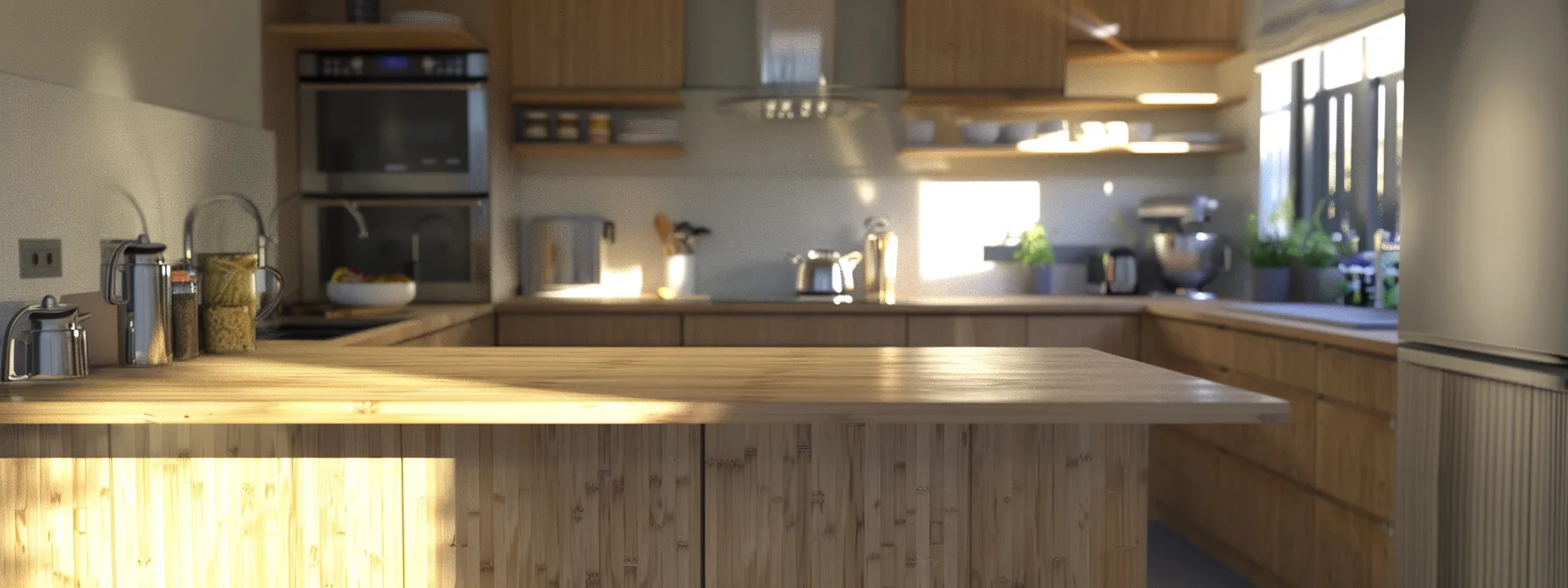
Choosing eco-friendly and sustainable materials for kitchen renovations can significantly enhance your space’s appeal while supporting environmental responsibility. I will explore the benefits of bamboo and recycled wood, which offer durable options. Additionally, I’ll discuss low-VOC paints and finishes that improve indoor air quality, and how to incorporate green materials into your kitchen seamlessly. Together, these insights can guide you in achieving a sustainable design that meets building standards from the Master Builders Association Victoria.
Benefits of Bamboo and Recycled Wood
When considering materials for kitchen cabinet resurfacing, I often recommend bamboo and recycled wood due to their eco-friendly properties. Bamboo is a fast-growing resource, making it a sustainable option that not only looks great but also contributes positively to the environment. Recycled wood offers a unique aesthetic with its distinct character while reducing waste, allowing homeowners to create beautiful cabinetry that aligns with sustainable practices and enhances the overall design of their kitchens.
Low-Voc Paints and Finishes
When selecting paints and finishes for kitchen cabinet resurfacing, I always recommend using low-VOC options. These paints emit fewer volatile organic compounds, which significantly improves indoor air quality, making them a healthier choice for your home. Not only do they provide excellent coverage and durability, but they also come in a variety of colors and finishes, enabling you to achieve your desired look while being environmentally conscious.
Incorporating Green Materials Into Your Kitchen
Incorporating green materials into your kitchen not only enhances its aesthetic appeal but also supports sustainable practices. I advise selecting eco-friendly options like bamboo or recycled wood, which provide unique looks while minimizing environmental impact. To further elevate your kitchen’s sustainability, consider using low-VOC paints and finishes that protect indoor air quality while offering an array of colors and styles for your cabinets:
- Bamboo for a fast-growing, sustainable resource.
- Recycled wood for a distinctive, eco-friendly aesthetic.
- Low-VOC paints for improved indoor air quality.
Now that we understand the value of eco-friendly materials, it’s time to make the right choice for your cabinet resurfacing. Let’s break down the steps to help you select the best options to enhance your space.
Steps to Select the Best Material for Your Cabinet Resurfacing
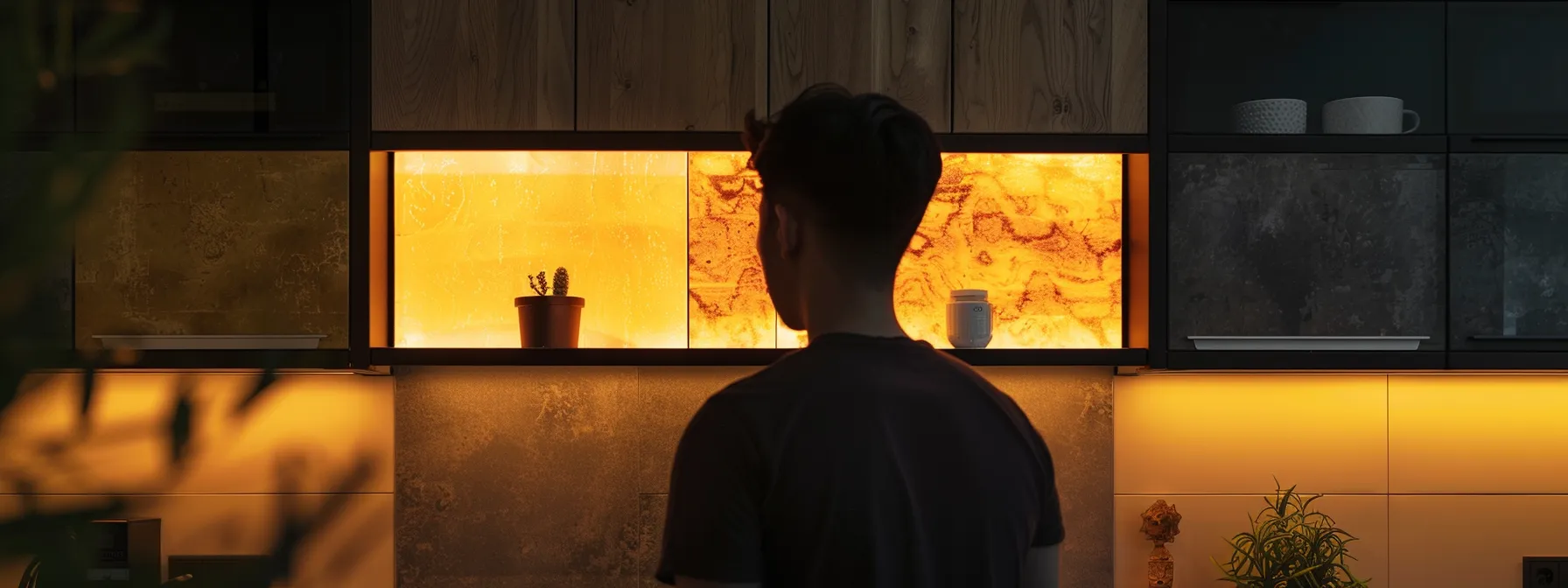
Steps to Select the Best Material for Your Cabinet Resurfacing
Setting a realistic budget is the first step in selecting the right materials for your cabinet resurfacing project. Next, consulting with resurfacing professionals provides valuable insights and expertise tailored to your needs. Finally, evaluating samples allows you to make an informed final decision, ensuring your cabinetry aligns with your vision and enhances your kitchen’s aesthetic appeal.
Setting a Realistic Budget
Setting a realistic budget is the first critical step in selecting materials for your kitchen cabinet resurfacing project. I recommend evaluating your overall renovation costs, including materials, labor, and any additional expenses. By clearly understanding your financial limits, we can focus on high-quality options that align with your vision, ensuring that every choice reflects both your aesthetic goals and your budget constraints.
Consulting With Resurfacing Professionals
Consulting with resurfacing professionals is an essential step in your cabinet resurfacing journey. I bring years of experience to the table, providing insights tailored to your specific kitchen needs and style preferences. By working together, we can explore various material options, ensuring that your choices align with both your vision and practical requirements, such as durability and maintenance.
Evaluating Samples and Making the Final Decision
When I evaluate samples for kitchen cabinet resurfacing, I pay close attention to how each material interacts with the overall design of your space. It’s essential to consider not only the color and finish but also the texture and durability of the samples to ensure they align with your practical needs and aesthetic goals. By comparing the visual impact of different materials in your kitchen’s lighting, I can help you make a more informed decision that enhances both functionality and style.
